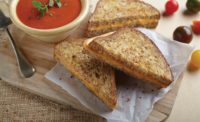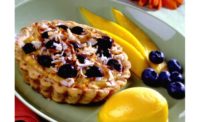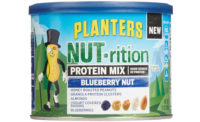Once upon a time there was the granola bar, hard and crunchy, made mainly of oats, raisins and sometimes nuts. College kid fare, you ate it while backpacking, or sometimes for lunch when you smashed it up (yourself) and stirred it into yogurt. It came in one or two flavors, nothing fancy, just our definition—at the time—of a no-frills, wholesome snack. No one over the age of 30 bought granola bars, and no one over the age of 50 even knew what they were.
Granola bars have grown up. Driven by consumers’ need for convenience and on-the-go nutrition, what started as a food for a limited audience and occasion has morphed into an eating staple for every age group and most eating occasions. According to research by the Sterling-Rice Group, consumers snack an average of 2.3 times per day, up from 1.8 times in 2008. Furthermore, almost 25 percent of consumers surveyed said they replace at least one meal per day with a snack. And according to IRI, Chicago, sales of snack bars in the U.S. hit $5.6 billion for the 52 weeks ending March 22, 2015.
Observes Molly Spence, North American regional director for the Almond Board of California, Modesto, “As consumers are snacking more, they are looking for options that will satisfy their needs for healthful ingredients that can help them feel fuller longer.”
Enter inclusions. Today, inclusions represent some of the most-important ingredients in meeting consumer needs and providing desired nutrition and flavor profiles. The number of product launches in the bakery and snacks category that contain fruit and or nuts nearly doubled from 2013 to 2014, according to recent data from Innova Market Insights. “Moreover, today a consumer would have to struggle to find bar that does not have inclusions, and I’d venture a guess that more often than not, inclusions can be the tie-breaker for a consumer decision,” says Julie Eno, associate marketing manager, Cargill Cocoa & Chocolate, Lancaster, PA.
And despite the multifunctional roles inclusions can play, their use always boils down to appeal. As Ron Heddelson, senior director of R&D, QualiTech, Chaska, MN, says, “People want to be getting the most enjoyment out of the time they spend with their food.”
Fruitful solutions
Although there is no technical standard for “superfruit” set by USDA or FDA, we generally think of this term to cover fruits that are high in antioxidants and sometimes exotic. Our first reference to superfruits might have been with blueberries, but now this term is used to cover cranberries, pomegranates, açaí, goji berries and the like.
One of the most-popular superfruits is pomegranates. Kyle Redfield, general manager of industrial sales, POM Wonderful, Los Angeles, notes that his company’s industrial product line has grown to meet customers’ needs for new applications and now includes juice concentrate, extract powder, extract liquids, juice concentrate powders, freeze-dried arils and individually quick frozen (IQF) arils. “IQF arils are especially popular in the snack and baked goods categories,” he says. “It’s a unique ingredient that allows the customer to use a very seasonal fruit in shelf-stable applications. Pomegranate arils add a pleasing burst of real pomegranate flavor, fruity aroma and enhanced texture to the host product.”
Research into health benefits of select fruits continues to bring welcome news—and open doors to targeted formulation demographics. “New research has shown that prunes will arrest bone decline in postmenopausal women at just 50 grams per day,” says Tom Leahy, president, CropSource International LLC, Walnut Creek, CA. He anticipates that prune ingredients will also go into products targeted toward consumers seeking to improve digestion.
Fruit ingredients can pose moisture-migration and other textural issues to select applications, including baked goods. One solution is functional citrus fiber. “Citri-Fi is a clean-label, all-natural fiber product derived from citrus pulp, which helps resist moisture migration from the fruit,” says Tash Burilini-Olson, director of food technology, Fiberstar, River Falls, WI. “Our product will enhance moisture surrounding the product, making it more palatable and improving shelf life.”
Sustainability in terms of water usage could drive usage of some fruit types. “Water rates are forcing our growers to cut back on watering and cap the irrigation system to lots of trees,” says George McManigle, president, Gold Crown Macadamia Association, Escondido, CA. “Passion fruit is the most-recent addition to my crops. In 2008, growers had to cut back 30 percent on our water usage. I looked for a crop that I could grow without additional water usage. Passion fruit is a vine that I planted next to existing avocado trees, and the vines aggressively climbed the trees and produced thousands of pounds of fruit using the same irrigation as the existing trees.”
Flavorful crunch
As snacking has grown, the amount of nut inclusions in snacks has also grown. And research has shown that almonds are some of the most-popular nuts used in bar applications (Sterling-Rice Group, U.S. Bars Exploratory Study, September 2014).
“Consumers are looking to bars not only as a snack or meal replacement, but as a source of nutrition as well,” says Spence. “In our research with consumers, heart health was selected as a top attribute in an ideal bar among consumers who preferred almonds in their ideal bar.” She notes formulators today have 15 different forms of almond ingredients from which to choose.
For segments of the population who cannot eat nuts due to allergy concerns—or those simply seeking “free-from” foods—nut-free inclusions provide a solution. Dennis Reid, vice president, sales and marketing, Inclusion Technologies, Atchison, KS, notes that his company’s Nadanut Naturals—nut analogues and nut extenders—are derived from wheat germ. “It is 100 percent nut-allergen-free, is clean-label and made from GMO-free ingredients.” He says that the inclusions, suited to a wide range of snack and bakery applications, can be clustered, coated, seasoned or drizzled, just like real nuts.
A bit of chocolate drizzle can make nearly any snack or bakery product more enticing—and Eno calls using chocolate in an application like a snack bar, a “permissible indulgence.” She sees many requests for products that contain chocolate coatings, drops or drizzles. “That’s why our portfolio of chocolates and compound products include a wide breadth of flavors and forms, as well as a variety of melt points and viscosities.”
Heddelson notes that the use of natural colors and customization are two areas of increased activity. “For example, a customer might be looking for a natural blueberry-flavored inclusion that also has a natural color,” he says. “Natural colors are more pH-sensitive and temperature-sensitive. Our company can help formulate these types of inclusions so the color will remain stable over time.”
Other new inclusion trends highlight the combination of multiple inclusions into each cluster. Taura Natural Ingredients recently created inclusions that combine fruit with protein, fiber and caffeine, or with ancient grains, such as chia and amaranth. This creates fruit pieces with a crispy texture.
Creative, dynamic additions that add color, crunch and a dose of sound nutrition will continue to help manufacturers of snacks and baked goods build product appeal.






